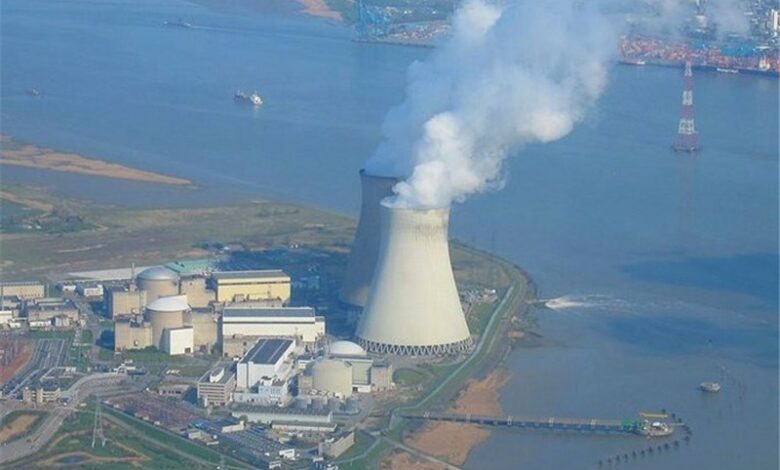Poland is expanding its nuclear power plants

| In order to implement the energy transformation plan, the Polish government has put the plan to build a large number of small and large nuclear reactors and expand this energy. |
In the next three years, the construction of the first nuclear power plant in Poland is going to be done right between the two villages of Kopanino. and Lubiato to be built about 90 km from Gdańsk.
About 350 hectares of forest are to be cleared to make room for kilometers of pipelines. The cooling water of the reactor is directed to the power plant through it and returns to the sea. In addition, a dock is to be built through which the materials for the power plant can be transported by ship.
At present, more than 70% of electricity in Poland is produced from coal. This share is expected to decrease to eight percent by 2040. Half of the electricity generation should come from renewable energy, followed by nuclear energy. In addition to the Kopanino-Lubiatów nuclear power plant, a second plant is planned near Konin, approximately 300 km from Frankfurt/Oder, on the site of a coal-fired power plant that is currently still in operation. These two nuclear power plants are scheduled to come online in 2033 and 2038, and together will produce up to 9 gigawatts of electricity in the long term.
In addition, Poland plans to install 79 small reactors in Make name SMR each with 300 MW output. They are expected to provide one-third of future nuclear energy and locally supply entire cities or factories with electricity and heat. The first SMR is scheduled to go online in 2028.
According to a poll conducted in November 2023, 83.5 percent of Poles support the construction of nuclear power plants in the country, marking a 180-degree turn. Gives. About 40 years ago, when only 20 km of the pipeline when the construction of the nuclear power plant in Zarnovis began in the currently planned nuclear power plant in the Baltic Sea, the disaster occurred in Chernobyl. After numerous protests across Poland, these plans were abandoned.
Adam Traczyk, a political scientist and pollster at the Maureen Kamen think tank in Warsaw, says that Poles today support the gradual elimination of Germany’s nuclear weapons. They know a big mistake. Poles see Germans as pragmatists – and they don’t understand this phase. Especially when they hear that some coal plants have come back online after the nuclear shutdown. For Poland, nuclear energy is a project that will help the country become more independent in the field of energy. Monika Morawiczka, among other scientists, is less optimistic. He said: It is questionable that it can really be said that a country will become independent thanks to nuclear power plants. Technology and fuel must be imported. But it is true that nuclear energy can guarantee stable energy and it is safe.
Adam Traczyk also said: Poles are no longer afraid of a disaster like Chernobyl. He said: Chernobyl was a long time ago. But fears of rising energy costs and bad weather are real.
The German states of Brandenburg, Mecklenburg-Western Pomerania and Saxony have long protested Poland’s nuclear power plant plans. This was opposed in the neighboring country. Adam Traczyk declared that what is even more incomprehensible than Germany’s nuclear phase-out is that Germany wants others to do the same. Natural gas as green technologies announced, Germany was no longer able to stop Poland’s nuclear power plant plans. Accordingly, as part of cross-border consultations, countries are allowed to express their views and ask questions, but no more. The consultation was completed in April 2023. Hendrik Fischer, at Brandenburg’s Ministry of Economic Affairs, Labor and Energy says: I myself am against nuclear energy, but I have to understand that our neighbors have a different point of view.
When planning nuclear power plants, the government Poland assumed that nuclear energy could be exported to Germany. Christina Haverkamp, CEO of the German energy agency dena, of course, categorically denies this. In this regard, he said: “Germany has given up not only on nuclear power plants, but on nuclear energy as a whole – including imported power plants.” Poles probably don’t know how long the project will take, what problems it will entail, such as the necessary final storage facilities, and that it will end up costing much more than was originally planned.
By Other residents of the communities surrounding the planned nuclear power plant in the Baltic Sea are divided. Many who practice agritourism or have summer homes fear the area’s charm will be lost. But they are in the minority. But surveys show More than 70% of the local population supports nuclear power, the government has announced that a highway and a rail link will be built, thousands of jobs and a huge influx of money have been promised, and it has been announced that there will never be a shortage. There will be no electricity.
end of message/
| Publisher | Tasnim News |


